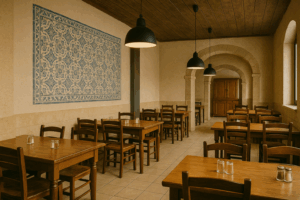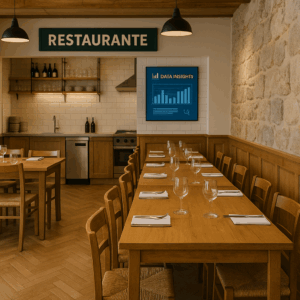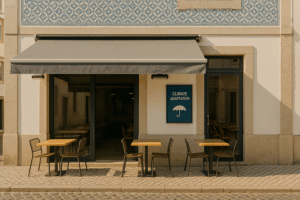Most restaurants in Portugal follow traditional service windows—but emerging demand patterns point to a major opportunity in extended restaurant hours in Portugal. This article explores the data behind shifting schedules and revenue gains tied to opening earlier and staying open later.
The Summer Hours Gap: Most Restaurants Miss Peak Tourism Demand with no extended restaurant hours in Portugal
As Portugal’s summer foot traffic surges, thousands of diners are out and about—just as most restaurants close their doors. A recent review of 130 restaurant format categories reveals that only 31% of venues stay open late, and just 28% open early, despite a clear shift in demand during the high season.
Missing Out
Of restaurants are missing peak tourism demand
Higher Revenue
Per-table revenue for late-night service
More Daily Revenue
For venues capturing the early rush
That means 69% of restaurants are missing out on one of the most valuable revenue windows of the year.
Shifting Patterns, Static Schedules
Tourists don’t eat like locals. Evening meals often stretch between 9–11 PM, especially among international travelers accustomed to late dining. Mornings are also seeing more movement: coastal towns are reporting up to 40% more foot traffic before noon, driven by tour groups and early business travelers.
According to Visit Portugal, food and dining remain a top spending category for international visitors, especially during evening hours.
Despite these trends, most venues stick to domestic routines—closing during mid-afternoon hours or shutting entirely by 10 PM. The result is a mismatch between customer presence and restaurant availability.
HospitalityNet highlights the profitability of late-night operations, especially in high-footfall tourism corridors.
The Cost of Closed Doors
Restaurants that extend their hours are seeing the payoff:
- 23% higher per-table revenue for those offering late-night service
- 18% more daily revenue for venues capturing the early rush
- Stronger loyalty among customers who turn late or early visits into regular habits
Extended hours are proving to be more than just a summer perk—they’re a consistent advantage for operators who lean into demand.
When Culture Aligns, but Business Lags
Portugal’s dining culture already leans late. Evening meals between 8–10 PM are common, especially in summer. Tourists fall naturally into this rhythm. Yet many restaurants remain closed during these hours—creating a clear service gap in cities and tourist hubs alike.
Success Comes with Smart Operations
Extending hours isn’t just about staying open—it’s about staying effective. The best-performing venues pair schedule shifts with operational upgrades:
- Split-shift staffing keeps energy high across long service windows
- Lean, time-appropriate menus reduce prep stress and food waste
- Cross-trained teams adjust fluidly between breakfast, lunch, and dinner
- Tech tools like real-time POS, QR ordering, and digital scheduling streamline service and labor
By aligning service hours with actual guest demand, operators maintain quality while improving throughput and team satisfaction.
Local Wins, National Lessons
Some regions are already proving the value of adaptation:
- Along the Algarve coast, early and late service led to 34% revenue gains, especially in beverage sales and high-margin dishes
- In Lisbon and Porto, tapping into the breakfast crowd and late-night visitors has helped close the gap on missed table turns
- Tourism-dependent regions that stay open later report better customer satisfaction scores and stronger repeat business during peak season
Implementation Without Overextension
Smart operators don’t just extend hours—they optimize for the specific demand they’re seeing:
- Late-night focus: Simplified menus with higher-margin drinks and shareable plates
- Early morning emphasis: Streamlined breakfast offerings that complement existing lunch prep
- Seasonal adjustments: Peak tourism hours in summer, adapted schedules in shoulder seasons
The Opportunity Cost of Status Quo
As tourism rebounds and dining habits shift, restaurants that don’t adapt their hours are essentially turning away ready customers. The data shows that the 31% of venues offering extended restaurant hours in Portugal are not just surviving—they’re thriving.
For operators still on the fence, the summer months offer a perfect testing ground. Small schedule adjustments, tracked carefully, can reveal whether extended hours make financial sense for a specific location and format.
For insights on other ways Portuguese restaurants are adapting to changing consumer preferences, see our analysis of outdoor dining trends and family dining optimization.
Analysis based on DIG-IN’s comprehensive review of 130 restaurant format categories and operating hour patterns across Portugal’s tourism and urban markets during summer 2025.




